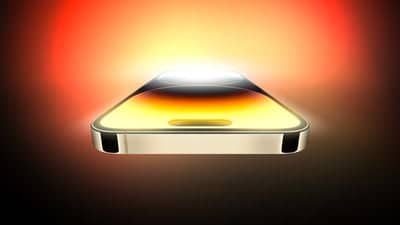Tim Hardwick
Apple’s next-generation iPhone 17 could bring some of the most significant display improvements we’ve seen in years. While the iPhone 17 series isn’t expected until late 2025, numerous rumors suggest that Apple is working on significant screen upgrades across its entire lineup of smartphones.

From improved refresh rates to refined materials and improved power efficiency, these display changes could mark a noticeable shift in Apple’s iPhone strategy. Here are five major display upgrades that are reportedly coming to the iPhone 17 lineup.
Larger Displays
Apple could introduce a new display size for the standard iPhone 17 in 2025, bumping the screen size from 6.1 inches to 6.3 inches, which would match the iPhone 16 Pro. The Plus model is rumored to be discontinued, leaving just one cheaper option in the lineup. At 6.3 inches, that device would sit between the current 6.1-inch iPhone 15 and the 6.7-inch iPhone 15 Plus. If these changes happen, the iPhone 17 lineup could include a 6.3-inch standard model, a 6.6-inch thin “Air” model, a 6.3-inch Pro model, and a 6.9-inch Pro Max model, offering a range of sizes to suit different preferences.
120Hz ProMotion Across the Lineup
Apple intends to expand ProMotion to all iPhone models in 2025, allowing all models to boost their refresh rate to 120Hz for smoother scrolling and video content when needed. Previously, this feature was exclusive to the “Pro” models in Apple’s iPhone lineup. Notably, ProMotion will also allow the iPhone 17 and iPhone 17 “Air” displays to drop their refresh rates to a more power-efficient 1Hz, enabling an always-on display that can show a clock, widgets, notifications, and lock screen wallpaper even when the device is locked.
More Power-Efficient Displays
A recent unconfirmed rumor suggests that Apple’s upcoming iPhone 17 Pro models may feature a new display technology known as Low-Dielectric TEE (Transmission Electrically Enhanced). The term likely refers to the use of low-dielectric constant materials in the display’s thin-film encapsulation (TFE). While it’s not yet clear what exactly this innovation offers, the inclusion of low-dielectric constant materials could generally reduce signal interference and power loss, resulting in more efficient power use and potentially longer battery life.
Anti-glare, scratch-resistant display
According to one rumor, the iPhone 17 will feature an anti-glare display that is more scratch-resistant than Apple’s Ceramic Shield found on the iPhone 15 models. The outer glass on the iPhone 17 is said to have an “ultra-hard anti-reflective layer” that is “more scratch-resistant.” It’s unclear whether Apple plans to use the Gorilla Glass Armor that Samsung uses on its Galaxy S24 Ultra, but the description of Corning’s latest tech matches the rumors. However, it’s worth keeping in mind that the new iPhone 16 Pro models feature the company’s latest Ceramic Shield, which has an advanced formula that’s 2x stronger than the glass on any other smartphone, according to Apple.
Smaller Dynamic Island
Apple’s iPhone 17 Pro Max will have a significantly narrower Dynamic Island thanks to the device’s use of a smaller “metalens” for the Face ID system, Haitong’s Jeff Pu claims. While a traditional iPhone camera has curved lenses that redirect light to the image sensor, a metalens is a thin, flat lens with microscopic patterns etched into it that can focus light more precisely. Assuming this results in a narrower Dynamic Island, it would be the first time Apple has changed the feature since it debuted on the iPhone 14 Pro in 2022.
Related review: iPhone 17[ 43 comments ]









